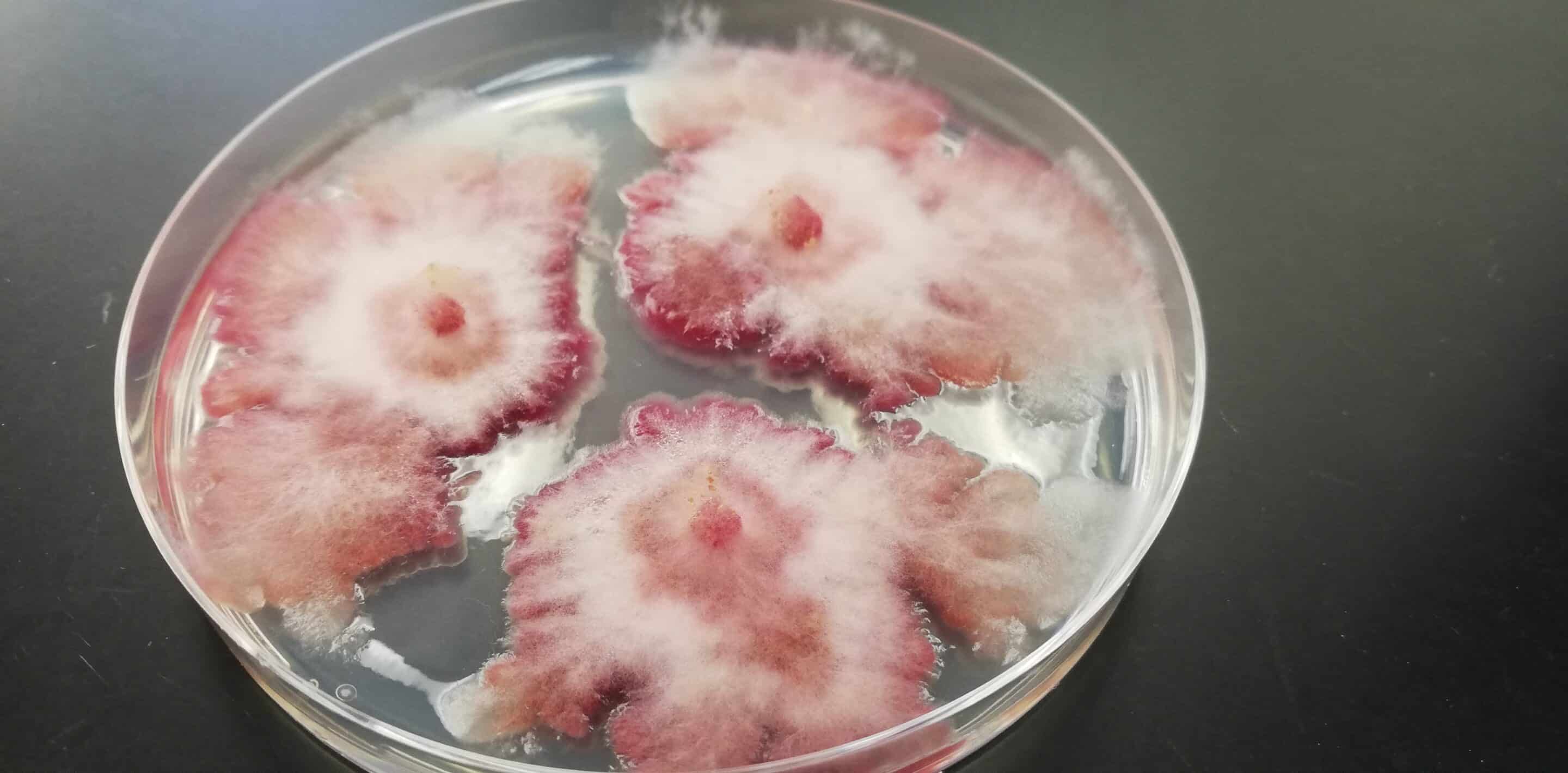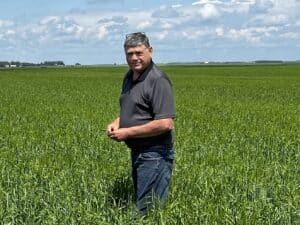Information and awareness have always been and continue to be the best defences against fusarium.
While fusarium may no longer be a regulated crop pathogen in Alberta, it’s still vital farmers continue their battle against the costly fungal pest. Not only can it cause a wheat or barley crop to be downgraded and discounted, but the resulting infection also poses risks to the entire value chain.
Fusarium was officially removed from Alberta’s Pest and Nuisance Control Regulation Act three years ago. However, the battle against fusarium graminearum infection in the province continues despite deregulation, with greater emphasis now on education and best management practices.
Monica Klaas, general manager of the Alberta Seed Processors agrees with the province’s decision to remove fusarium as a regulated pest, but says it’s important— now more than ever — for farmers to get their seed tested for this pathogen.
“Information and awareness have always been the best defenses to fight fusarium. Being educated on the pathogen, its presence, and control mechanisms are smart defenses for all crop diseases, including fusarium. Additionally, working together as an entire value chain with open communication serves everyone well,” she says in an email interview.
Fusarium was first declared a pest in 1999 with the goal of reducing the spread of the pathogen through infected seed, Klaas says. While this strategy was effective in early years, the pathogen then became established in many regions of the province.
“Hence, the strategy needed to change from regulation to management,” she adds. “This now allows the industry to focus on management, rather than having possible false hope that a decades-old regulation will stop the spread of a pathogen.”
Trent Whiting agrees. As SeCan’s marketing representative for Alberta and British Columbia, he says in an email that fusarium control has always been about best management practices and Mother Nature. For that reason, he says he’s not sure regulation was ever necessary. “Whether part of a regulation or not, the responsibility is always on the farmer to decide what’s best for them to do.”
Those working in industries such as malting know fusarium is present and an economic concern in many areas of the province.
“We know the disease is present and of economic concern in many areas of the province. With proper procedures and education of the industry, we hopefully can keep the disease under control,” Lorne Campbell, agronomist at Rahr Malting Company, adds in an email interview.
Best Management Practices for Fusarium
It’s no secret farmers want the best return on investment possible for their crop, which includes a combination of agronomics, yield, grade, and quality.
“We’ve finally got varieties that provide them all together into multiple varieties,” says Whiting. “Breeding for better (fusarium) resistance started decades ago, but it takes a long time to breed so improvements have been slow and steady. Every breeder’s goal is (fusarium) resistance but combining that with everything else that a farmer wants in a variety is very difficult, but they continue to work at it.”
Market access is paramount to the entire crop value chain, Klaas adds. Citing there have been cases of international customers using a perceived pest/pathogen infestation to mandate a moratorium on Canadian grain imports — these are called non-tariff trade barriers.
“Careful stewardship of any contaminants that cause real or perceived harm to quality is of paramount importance to protect buyer confidence domestically as well as internationally,” she says.
To help combat this, Klaas says there are three key factors to protect market access. These include:
- Surveillance and weather modelling tools to predict fusarium head blight (FHB) risk – provincial surveillance programs which include both seed infection and field surveys that help to retain Alberta’s low-fusarium status. This, coupled with weather forecasting, helps farmers make integrated pest management decisions for foliar spray applications.
- Research investment – plant breeding and traditional and novel crop protection to protect against fusarium.
- Communications – collaboration between farmers, provincial and municipal governments, agronomists, the research community, academia, the grain trade, and the seed industry on fusarium management.
Farmers aren’t alone in carrying responsibility for fusarium. Campbell adds each sector of the agricultural industry—producers, industry partners, and government—must educate themselves about FHB.
“If there is an expectation of an infestation, testing should be done to confirm a problem or not. The industry needs to test as many samples as feasible to get an early indicator that the disease is present or not in the area. Results found by industry needs to be relayed back to source so best practices for control can be implemented.”
Most Fusarium Susceptible Crops
When it comes to which crops tend to be more susceptible to fusarium, Klaas says it’s durum, followed by other wheat classes.
“Other cereals like barley, oats and rye are less susceptible than wheat. Higher infection absolutely trends higher in irrigated areas, as the pathogen thrives in higher moisture and temperature conditions.”
Corn can be a source of the pathogen inoculum as it’s a host for fusarium, though it’s relatively unaffected by the pathogen itself. Corn field residue (stalks, etc.) can harbour the pathogen until the crop residue breaks down.
“(Corn is) susceptible, as is durum, soft white spring wheat and CPS, but they are mostly grown in areas that didn’t have the right environment for the rapid development of (fusarium). But that changed about a decade ago when we went through a warm moist cycle in most of central Alberta and poof we have lots of (fusarium) now,” Whiting explains.
Fusarium can also have an effect on malting and grain quality. This means fusarium-infected grain shouldn’t be fed to livestock or used for malt barley.
Beef cattle do have a higher tolerance to the main mycotoxin associated with fusarium (deoxynivalenol, DON) than monogastric species like poultry or swine, Karin Schmid, beef production and extension lead for Alberta Beef Producers, says in an email. The Canadian Food Inspection Agency limits DON in cattle diets at five parts per million for those older than four months of age.
“However, the presence of (fusarium) may indicate the presence of other mycotoxins that are more harmful to beef cattle. It is important that any producers considering utilizing feed that may be contaminated with any mycotoxins have their feed tested to mitigate any potential negative animal health consequences.”
She adds that whether it’s beef cattle or grain crops, “producers want to generate high-quality products that they are proud of, and making good management decisions ensure you’re not passing along problems to the next component of the value chain.”
For brewers, Campbell says low levels of fusarium infection can cause barley to explode during the malting process. Malting provides an ideal, warm and humid, environment ideal for fungal development.
“The presence of DON in the malt can affect the taste of the beer and may also cause gushing (excess foam) when being bottled or opened,” he adds.
What’s A Farmer To Do About Fusarium?
So, what is the best plan of action to remain vigilant in the protection against fusarium?
“Always start with the best seed you can and use a seed treatment as you want your crop to get the best start possible,” says Whiting. “Pay attention to the weather and—if conditions are right for the development of (fusarium) at heading—then consider a fungicide application specifically for (fusarium).”
He adds farmers want the best return on investment possible, which involves a combination of agronomics, yield, grade, and quality.
Farmers are advised to select varieties with genetic resistance to the pathogen, Klaas says.
“This is a really good news story that ties into agricultural sustainability. The selection of a resistant variety ties into IPM which could reduce the environmental loading of rescue foliar applications of crop protection products and improve land and water use efficiencies by protecting yields with lower input costs.
For malting there needs to be confirmation of very low levels of DON in the grain so brewers can be assured the malt they’re using is going to be a non-issue in beer production, Campbell says.
“Producers need to know the quality of the product they are selling so that at time of delivery there are no issues at the facility. Holding product that can be rejected costs money and lost marketing opportunities to other markets,” he adds.
Farmers should consider the characteristics of different varieties, and what variety might be the best fit for their particular situation, Schmid says.
“Whether producers are focused on increased yield, decreased lodging or better disease resistance, plant breeding efforts generally include a well-rounded suite of traits, and not a singular focus on any one trait, to help producers improve the overall quality of the crops they grow. It takes years to produce a new cereal variety, so many of these improvements in traits like disease resistance are incremental in nature.”
Header photo — Fusarium graminearium culture in a petri dish. Photo: 20/20 Seed Labs
Related Articles
Alberta Fusarium Levels in Seed Low for 2023








